Microsoft BUILD: Windows 8, A Pre-Beta Preview
by Brian Klug & Ryan Smith on September 13, 2011 12:05 PM EST- Posted in
- BUILD
- Windows
- Microsoft
- Windows 8
- Trade Shows
The Metro UI
The best way to describe Windows 8 is a cross between the Metro UI from Window Phone 7 and the desktop architecture of Windows 7. In fact, virtually everything but the desktop gets a Metro treatment in Windows 8.
The Windows home screen starts initially hidden behind a lock screen virtually identical to WP7’s - slide up on a large edge-to-edge background to unlock. Inside is the Metro start screen, which is comprised of a grid of live application tiles that behave almost identically to those in Windows Phone 7. Two sizes of tiles serve as both application launch shortcuts and notification areas that can be populated with notifications, graphics, and other status indicators.
The tiles populate a horizontal strip that can be scrolled back and forth, and tiles can be rearranged accordingly. There are a few new gestures here over what we’ve seen before in WP7, including a swipe up to select a tile, and multitouch scrolling plus tile repositioning. Swipe up on tiles, and you can select them to convert size, uninstall, or unpin from the home screen.
The new start menu is more than a user experience oriented at tablets, it’s also the design language Microsoft has adopted for the entire new Windows 8 experience.
The thing to realize is that this modality isn’t so much a view as it is a combination of both new start menu, new interface for making Windows usable from a mobile perspective, and a completely new interaction paradigm. The interface is designed to perform and behave in the same way across multitouch, active digitizer, and keyboard+mouse combinations.
There’s another set of gestures and features as well which make use of the four edges of the display. The top and bottom are reserved for application-specific functions, the left and right are reserved for two Windows 8 specific tasks.
Sliding one’s finger from the left edge onto the display allows for both fast application changes, and the multiple-window snap functionality that’s been demoed already. The split is roughly 1:4 and divides horizontal real-estate between two applications views at once. The narrower of the two requires some additional development support, but the aim is to create a workable touch interface without sacrificing multitasking.
Swiping a finger from the right edge of the display towards the center brings up what Microsoft calls charms. This is a view that includes status indicators, and functionality like search, share, start, devices, and settings.
These respective shortcuts then bring up panes that occupy the same area on the right, and do what you’d expect. Settings for example is a place each application to build out a preferences area, so that each application has a common place users will go to control things.
Likewise, share acts like an intelligent copy paste, sharing working elements between applications. Finally search can either look through files and applications or dive into strings surfaced by other third-party applications.
These left and right based gestures exist across not just the Metro-infused start screen, but the entirety of Windows.
Moving around and getting back to the home screen is accomplished by pressing the Windows button, which on the tablet we were loaned is its own physical button analogous to iOS’ home button. Pressing the keyboard windows button performs the exact same action and summons the start menu.
The current set of first-party applications is pretty spartan. There’s no maps, mail, or camera application, though Microsoft has already bundled a set of its own internally-created applications. These are entirely Metro themed as well. I mention camera because the sample hardware includes a front facing and rear facing camera, and at present the only way to access them is through the change user tile picture function, which can capture a photo from the front or back webcam.
Throughout the entire OS is a very WP7-like virtual keyboard, which supports a full size and thumb keyboard mode. There’s also a handwriting recognition mode which has two lines of handwriting input and is styled similarly to Windows 7’s tablet input keyboard.
The keyboard can be docked to the bottom of the display or detached and dragged around as well. I find that the split keyboard accommodates typing with thumbs and holding the device midair quite well.


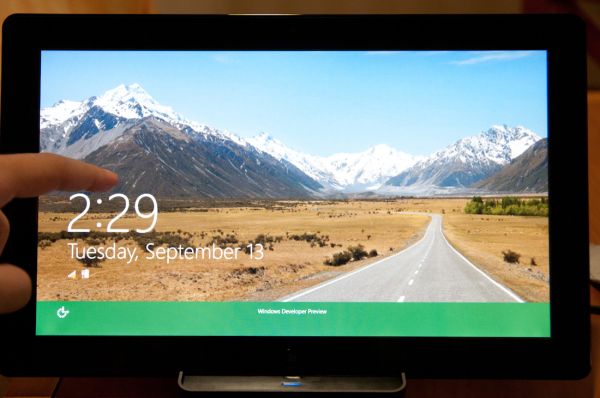
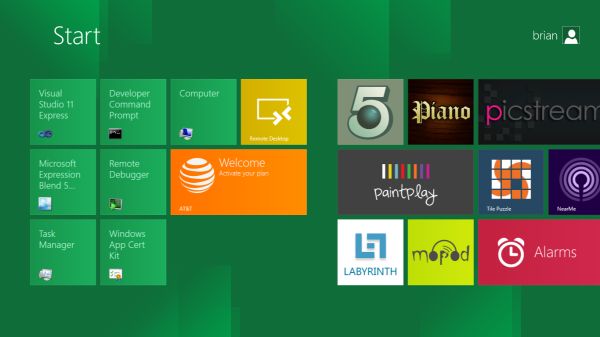
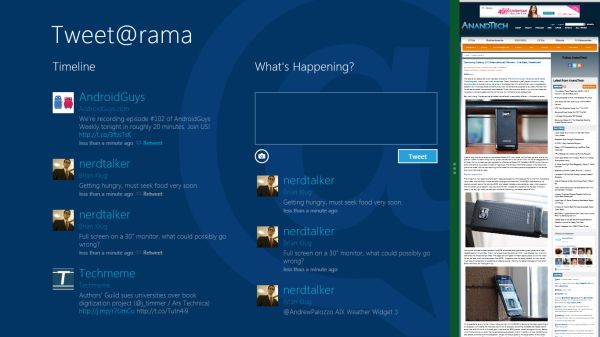
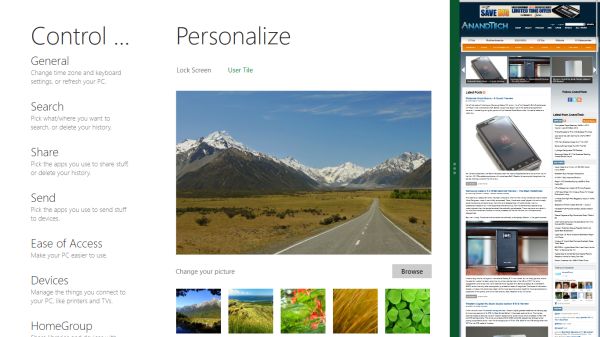

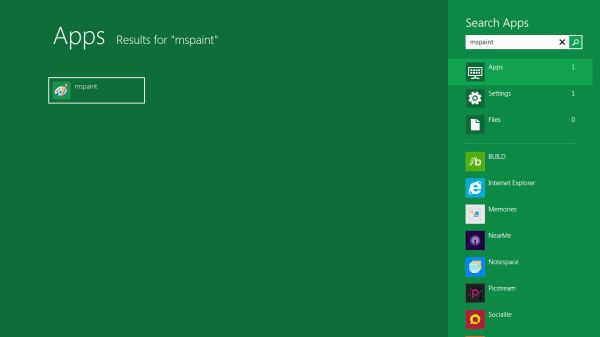
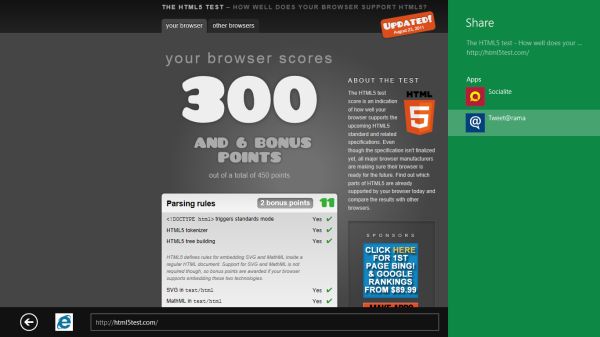
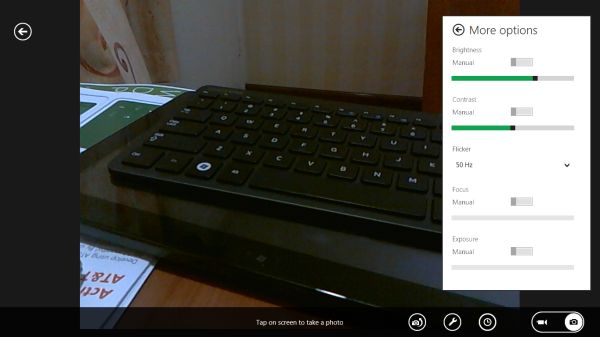
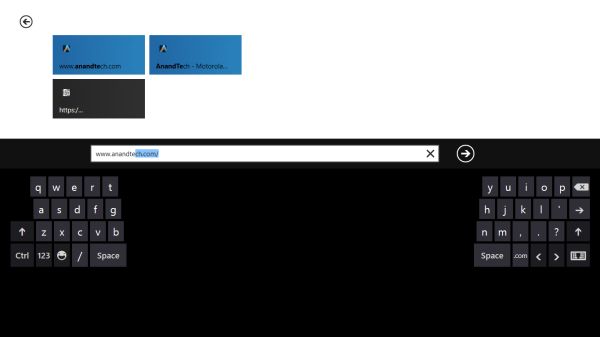








235 Comments
View All Comments
A5 - Tuesday, September 13, 2011 - link
They don't even bother to C&D the people who make explicitly LCARS skins for Android, so they would lose horribly if they tried to sue MS. You have to consistently defend your IP to keep it.UMADBRO - Tuesday, September 13, 2011 - link
What are you smoking, and why arent you sharing?damianrobertjones - Tuesday, September 13, 2011 - link
"The converse of that is that Metro feels akward and out of place when used with a mouse and keyboard as a laptop/desktop. "tell that to a new user who's using a computer for the first time.. they'll love it
MacTheSpoon - Tuesday, September 13, 2011 - link
Hmm... well, it is just a pre-beta. I'll keep my fingers crossed that it gets the kinks worked out.araczynski - Tuesday, September 13, 2011 - link
...bad enough pc games get basterdized console versions, now they're making their main OS consolized too...if this is their new norm, i'm just switching to apple, at least their crap is more stable.
sviola - Tuesday, September 13, 2011 - link
Then you're also going to be disappointed. THey seem to be moving OS X in the direction of iOS. But you can always install FreeBSD and run prompt only...damianrobertjones - Tuesday, September 13, 2011 - link
Windows Media center was out before the Xbox and that used nearly the same look.Wellsoul2 - Thursday, September 15, 2011 - link
"Windows Media center was out before the Xbox and that used nearly the same look. "I agree. It's very similar to WMC which makes it usable on my TV with a remote control.
Sure it's dumbed down and clunky. WMC is very clunky IMHO.
I really like the idea of using this OS with my HTPC though since it will make it
easier to use all my programs with a remote control. The article didn't address
that but the future may also be using your computer hooked to a TV alot of the time.
For that purpose this is a good beginning.
I'd be totally happy if I could switch between Metro and Win 7 desktop for the higher
resolution desktop.
ph0tek - Wednesday, September 14, 2011 - link
Apple will do the same eventually. Only difference is Apple will pretend they did it first, as usual.Adapt or die.
Dug - Tuesday, September 13, 2011 - link
Business users want something like this. Portable, lightweight, easy to use.
If they can have a full os and run the many apps they are used to without using a dumbed down version like on other tablets, it will be very well received.
Look how hard companies try to make business apps on an ipad and android platforms. And how many people are using them but wish it to function like a full blown os.
With this you get the best of both worlds.
Plus you can easily use a mouse and keyboard when needed. You can't do that on android and ios because there is no mouse cursor.